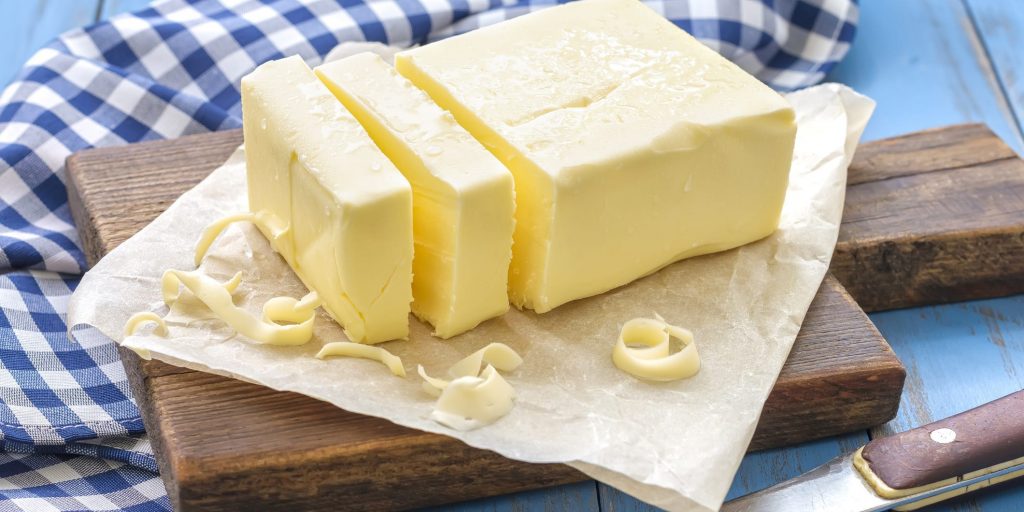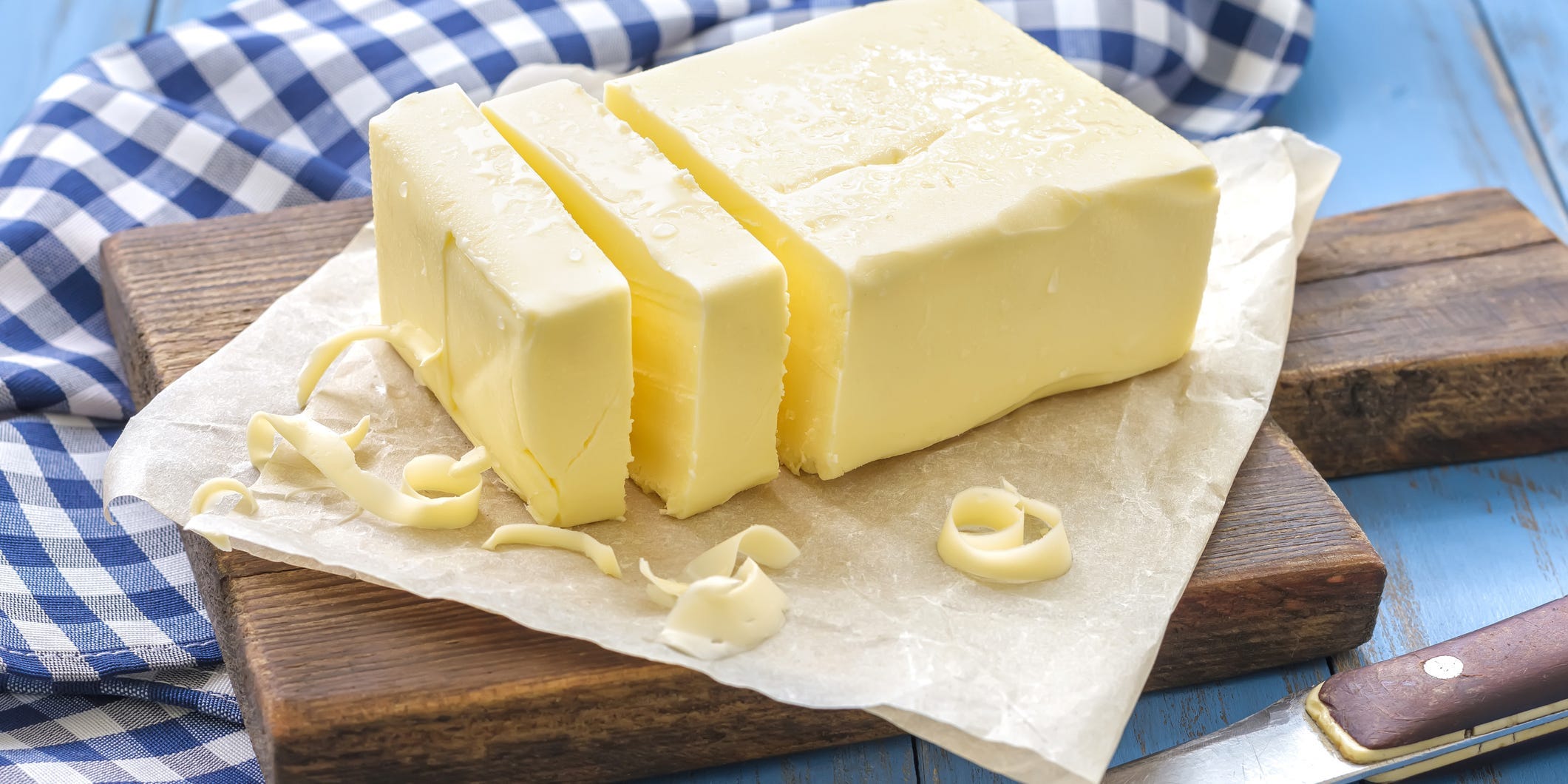
YelenaYemchuk/Getty Images
- Softening butter properly is crucial since the texture can affect the outcome of the recipe.
- Cubing up butter and mixing it with an electric mixer is the most effective technique.
- Steer clear of the microwave – there's too much risk of melting your butter.
- Visit Insider's Home & Kitchen Reference library for more stories.
We've all been there. You're just about ready to bake and you forgot one critical step in the prep process – softening the butter. Kathryn Gordon, chef-instructor of Pastry & Baking Arts at the Institute of Culinary Education, says melting butter instead of softening it can negatively impact your recipe, so this step is key.
When a recipe calls for mixing ingredients with butter until "fluffy," this effect is essentially an emulsion between the fat and the water. "This will happen best when it's all at the same temperature," Gordon says.
If you don't soften butter properly, you'll alter the recipe's final product. For example, if you're baking cookies and use melted butter, Gordon says the texture and shape of the cookie won't be exactly what you're looking for.
The reason? Butter has a lower melting point than ingredients like shortening, which causes it to spread more quickly and, therefore, create flatter, less pillowy cookies. Suffice it to say, softening butter properly is a cardinal rule of baking. Luckily, you can avoid flopping your next baking project by bringing your butter to room temperature before you begin.
What does "softened" really mean?
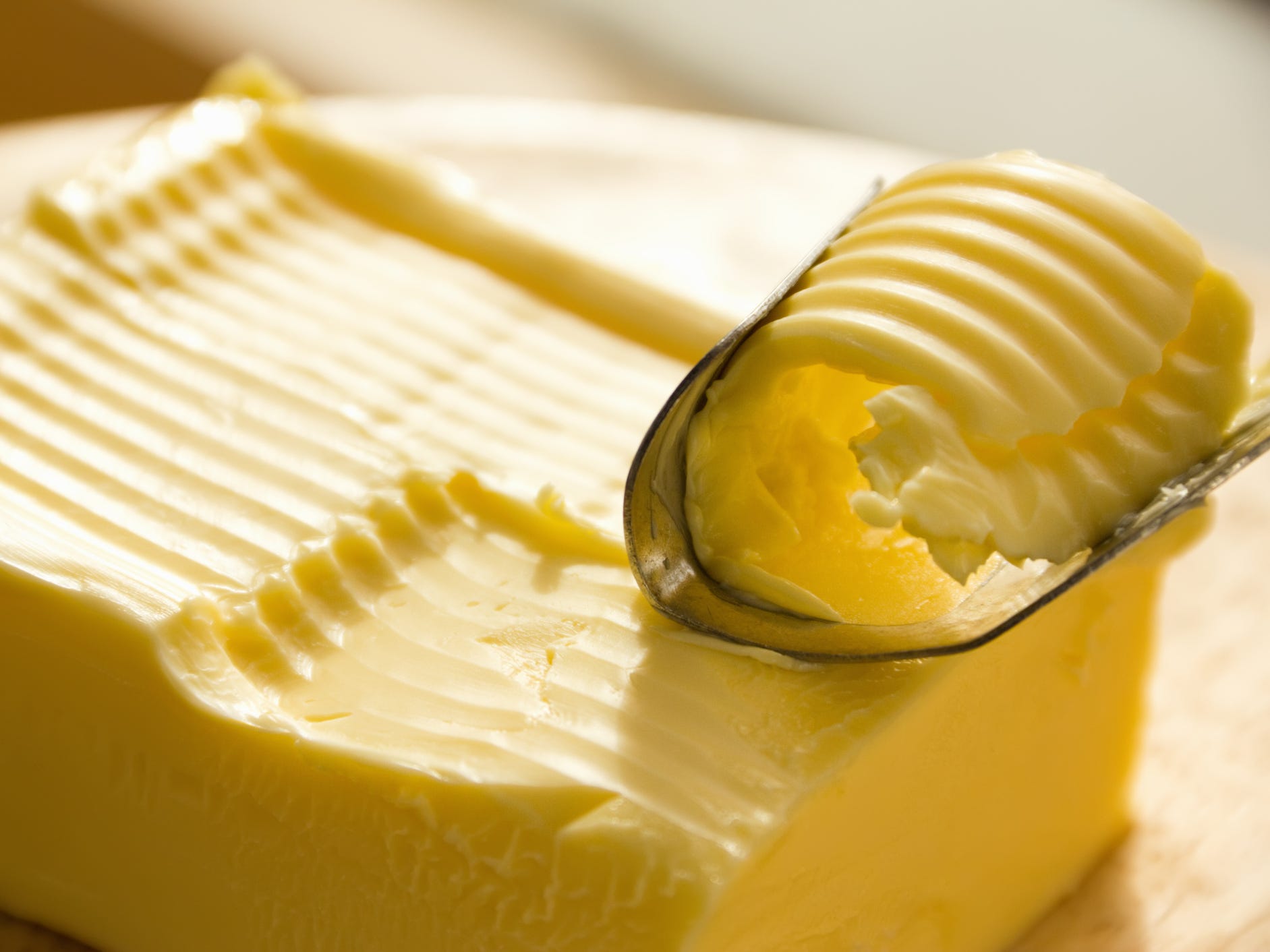
lutavia/Getty Images
To know if your butter is the right consistency for baking, Gordon has a foolproof way to test it out. "If you put your clean finger against it, it'll smush a bit and move," she says. It shouldn't be so soft that it's able to spread easily on toast, she says, but it shouldn't be firm or waxy like it was when you first took it out of the refrigerator.
Below are four reliable methods for softening butter without the potential danger of melting it.
The old fashioned way: Leave it on the counter
If you remember to do it, Gordon says this technique works very effectively. Leaving your sticks of butter on the counter an hour or so before baking can help soften the butter evenly before you're ready to bake.
"Separate the sticks so that they're not insulating each other with cold and then that can help them come to room temperature faster," Gordon says. Keep in mind, if your kitchen is typically cold, especially in the winter, this method won't be as effective.
But let's be honest, you're likely here because you've already forgotten to do this. The next method is your best bet.
Cube it and mix with an electric mixer
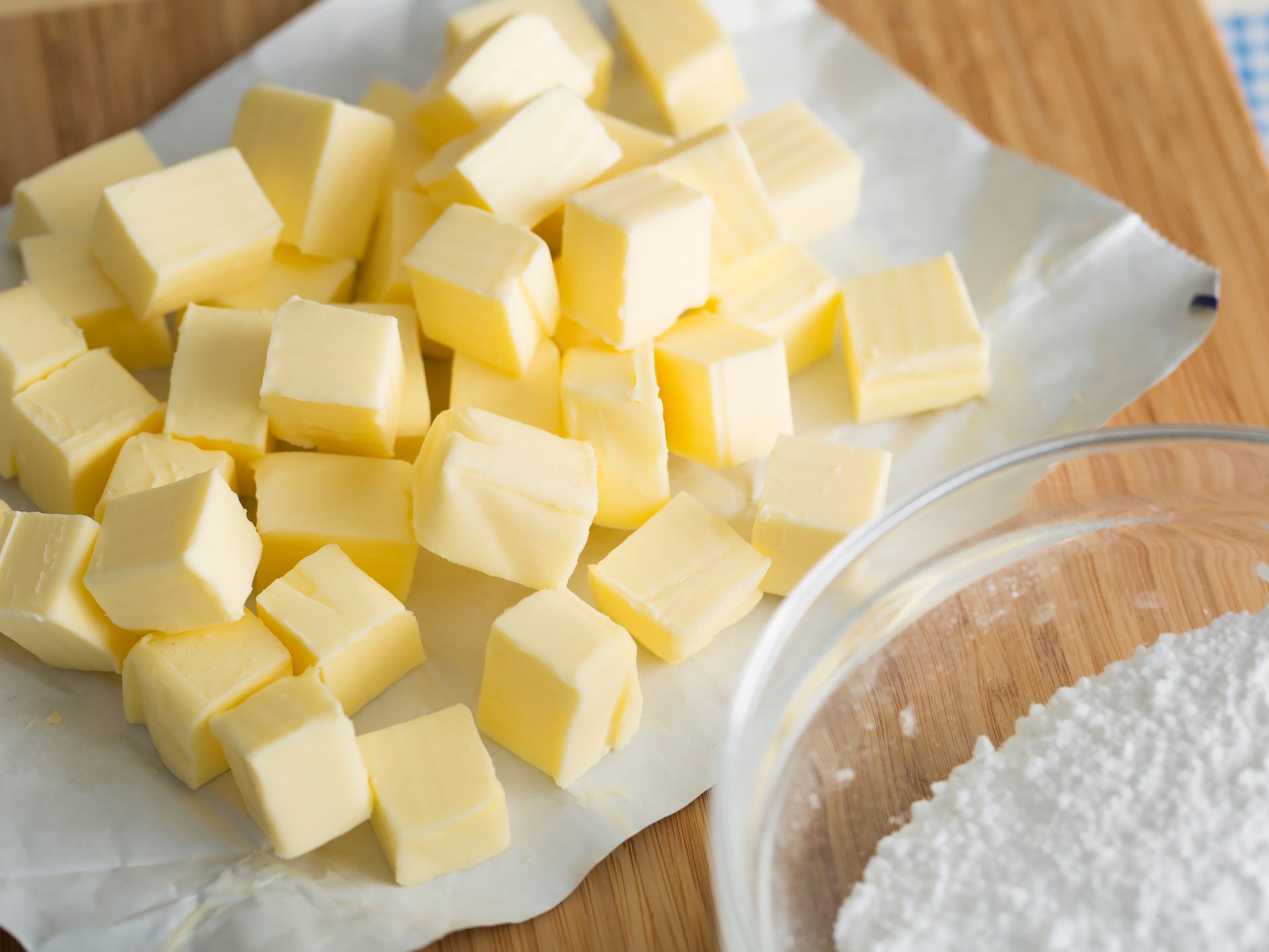
cheche22/Getty Images
Not only is this Gordon's favorite method, but it's the most viable. Use a knife or bench scraper to cube up the amount of butter needed for your recipe. "The more exposed it is to the air, the faster it becomes room temperature," she says.
Before adding in the rest of your ingredients, Gordon recommends using an electric mixer at high speed for about 20 seconds to soften up the butter completely. "When you add your sugar, the sugar is sharp, so it makes space in the butter like little blades to hold the next ingredient," she says.
Pound it with a rolling pin
Gordon says this technique works very effectively. After covering your sticks of butter with parchment paper or plastic wrap, get it to move and flatten by smashing it with a rolling pin.
This method is especially effective when it comes to making puff pastry. "The majority of time, whether you're making a cake or a cookie, you want room temperature butter - but sometimes you actually want a malleable, cold butter like if somebody is making puff pastries," Gordon says.
Instead of changing the temperature completely from when it was cold in the refrigerator, the butter needs to move when making puff pastry, she says. This method allows for the butter to not only soften, but also become more pliable.
Grate it
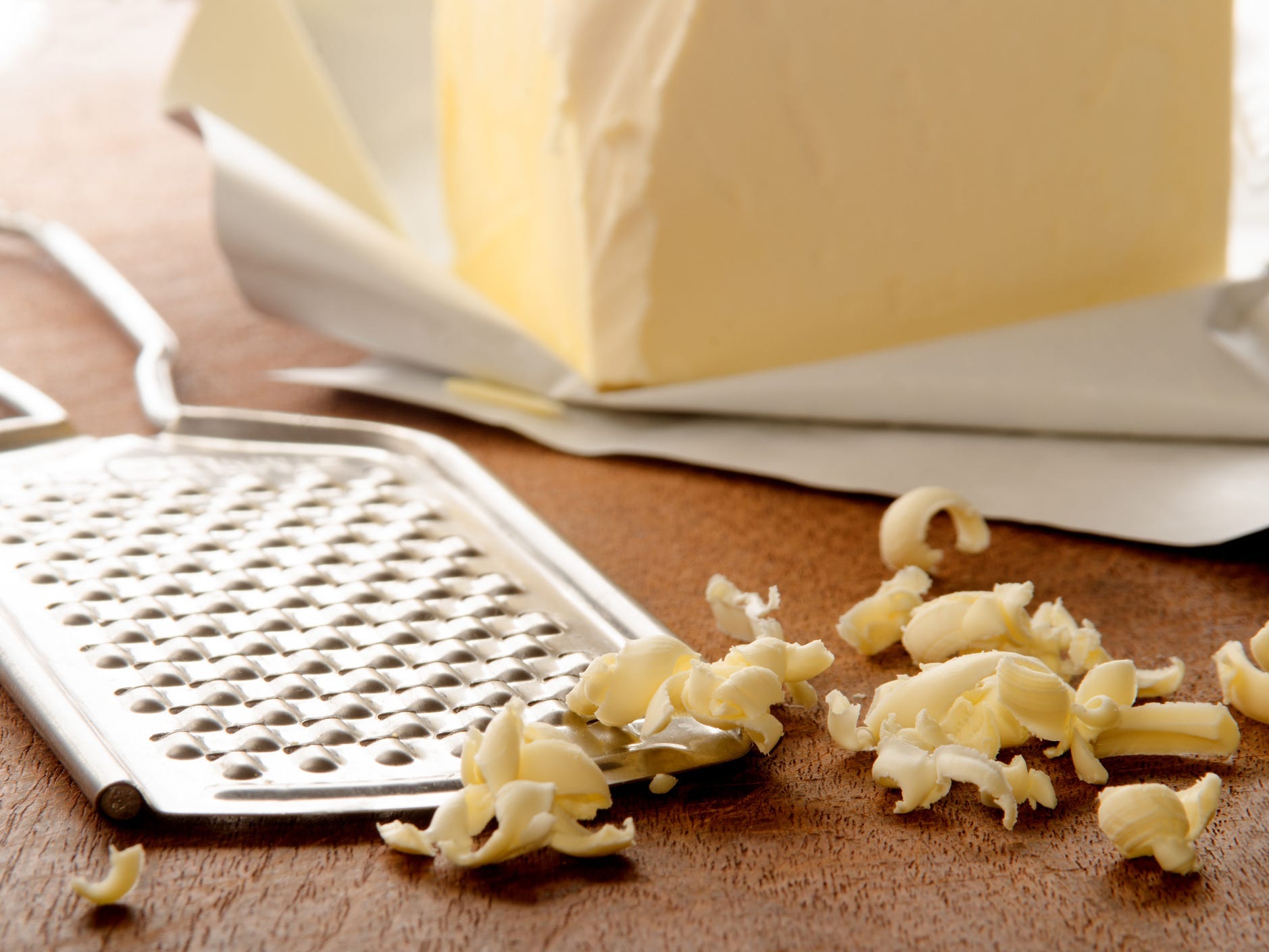
Szakaly/Getty Images
This tried-and-true technique is simple: Use the largest size on the box grater to slice up your butter into smaller pieces. The one thing to look out for when softening butter with this method? If your hands tend to be warmer, you may accidentally melt the butter while grating it. You can avoid touching the butter by using the shredding blade of a food processor.
What not to do
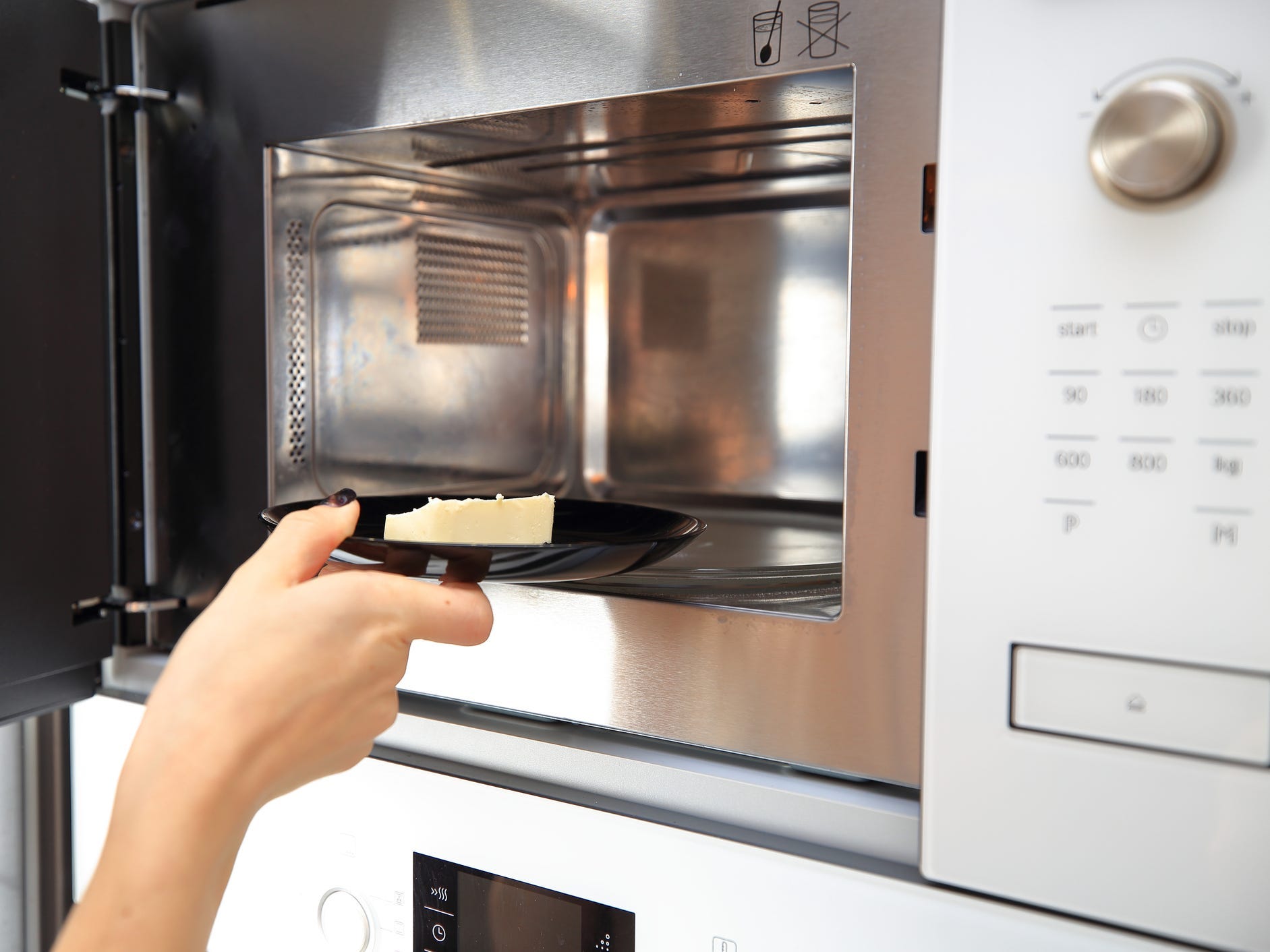
dimarik/Getty Images
Some of the more common butter softening hacks out there are actually pretty risky. It's easy to go too far and melt your butter, which makes it unusable in a recipe that calls for softened butter. Gordon warns against these two methods in particular.
Use the microwave
Unless the recipe calls for melted butter, avoid the microwave at all costs, says Gordon. The appliance varies too drastically by model and has too many power levels to reliably and evenly soften butter. "One tiny, extra little zap will do you wrong," she says.
Put it under a warm glass bowl
This method is less risky than the microwave. It involves putting boiling water into a large glass bowl and letting it sit for a few minutes. Once you pour out the water, you put the bowl upside down over a stick of butter sit let it soak up the heat underneath.
Gordon says as long as the butter doesn't touch the warm bowl, it should be okay. However, this technique can cause you to run into too many issues, melting-wise. The surface may begin to melt before the butter is softened all the way through. All told, it's a bit too risky for Gordon's taste.
Insider's takeaway
Baking really is a science. Softening butter is just as essential in the preparation process as preheating the oven. Fortunately, these trusty methods for how to soften butter are not only viable but also fairly quick. The most reliable method is cutting up the butter into small cubes and using an electric mixer to soften it.
